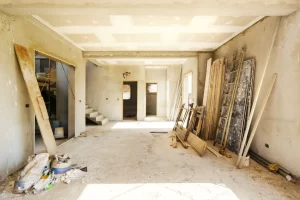Give your roof a health check
Your roof is one of the most vulnerable parts of your home. It bears the brunt of winter cold, heavy rain and strong winds, never mind the searing heat of summer. So it’s important to keep an eye on it, particularly as general wear and tear isn’t covered in your home insurance. If you do spot anything, it’s best to get a registered roofing expert in to review and repair the damage if required.
Start with your attic
Get inside your attic and check for any signs of roof damage, like sagging, water rings or sunlight coming through. Remember you may also save money on heating bills if you stop the cold coming in from holes in the roof.
Tiles & cracks
Stand outside and take a good look at your roof. Any missing or loose tiles? Are there any cracks around the parapets or chimney?
Check the flashing
What’s flashing we hear you ask? Well chimneys, skylights, satellite dishes and other objects on your roof are sealed with metal strips called ‘flashing’. These can become damaged over time or during bad weather. Flashing needs to sit flush against the roof with no gaps where water can seep in. Flashing can also slip over time, so check for any signs of movement or rust.
Moss growth
Moss is harmless, right? Sadly not. Moss can cause moisture damage to roof tiles and the wood underneath. During summer it can spread fast, so it’s best to catch it before it gets out of control. The easiest way to remove moss is after a dry spell: just brush it off with a stiff broom. If your roof is covered in moss, it might have caused further damage. So it’s best speaking to a roofing expert for advice.
Guttering and downpipes
Your gutters might look clear from below, but debris (like moss or leaves) could have built up, causing blockages. This may cause serious damp issues if it’s left, with rainfall overflowing into brickwork. Also make sure the support brackets of any guttering are securely fixed.
Like any household wear and tear, the longer any damage to your roof is left, the worse it’s likely to become. So, if you do spot anything, it’s best to contact a registered roofing contractor or gutter cleaning professional to check out any potential issues.







